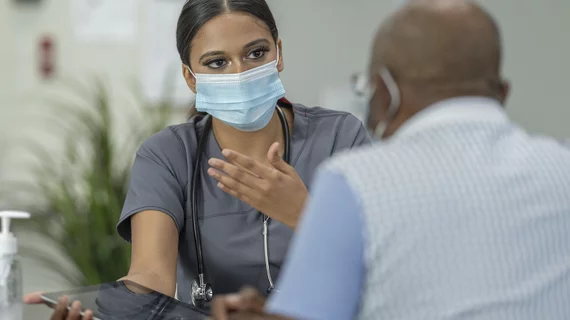New imaging technique detects post-COVID lung abnormalities
Even when CT scans and lung function tests return normal results, a new MRI technique known as Hyperpolarized Xenon 129MRI (Hp-XeMRI) can detect lung abnormalities in patients who previously had COVID-19, according to a new study published in Radiology.[1]
The technique assesses ventilation and gas exchange into red blood cells, allowing practitioners to identify concerns with a patient’s ability to move oxygen from the lungs into the bloodstream, or to move carbon dioxide from the blood into the lungs.
“These abnormalities are not apparent on conventional imaging, and in some individuals were detected up to a year after their initial COVID-19 infection,” said the study’s senior author, Fergus Gleeson, MBBS, from the department of oncology at the University of Oxford and department of radiology at Oxford University Hospitals NHS Trust, in a statement about the findings.
The technique and the lung abnormalities it uncovers can offer new insights into “long COVID-19,” the term used to describe medium and long-term symptoms of people that experience ongoing symptoms after a prior COVID-19 infection. Common symptoms of long COVID symptoms include breathlessness, fatigue, and brain fog.
“Using Hp-XeMRI may enable us to further understand the cause of breathlessness in long COVID patients, and ultimately lead to better treatments to improve this often debilitating symptom,” added study co-author James T. Grist, PhD, from University of Oxford Centre for Clinical Magnetic Resonance Research and the department of radiology at Oxford University Hospitals NHS Trust.
Long COVID symptoms can afflict even those who were not hospitalized during their initial infection, and so do the abnormalities identified by Hp-XeMRI. The study’s authors looked at images for 23 long COVID patients experiencing breathlessness, including 12 participants who were hospitalized for their initial COVID-19 infection as well as 11 participants who were not hospitalized. Additionally, the study looked at images for healthy volunteers with no evidence of a prior COVID-19 infection as a control group.
“We saw that the ability of gas to transfer from the lungs into the bloodstream was less in non-hospitalized patients in comparison to those hospitalized with COVID,” Dr. Gleeson said. “Furthermore, both groups of participants had lower dissolved phase Hp-XeMRI values than healthy participants, pointing to potential defects in either the lining of the lung or the surrounding blood vessels.”
Further research will aim to add greater perspective to the clinical significance of the findings by examining the correlation between lung abnormalities and additional data points.
“We will assess different groups of participants who have had COVID and correlate the findings with physiological data, symptom-based questionnaires and cardiac MRI to better understand the clinical significance of our findings,” Gleeson said.
Reference:
1. Grist, James T., Collier, Guilhem J., Walters, Huw, et al. Lung Abnormalities Depicted with Hyperpolarized Xenon MRI in Patients with Long COVID. Radiology. May 24, 2022. DOI: https://doi.org/10.1148/radiol.220069
Related MRI Content:
Some respiratory face masks are unsafe for MRIs, study finds
Veterans who experience chronic pain and trauma have connectivity abnormalities on brain imaging
Connectivity abnormalities observed on MRIs of insomnia patients
New 7T MRI scanners could increase radiologists' role in treating neurological conditions
